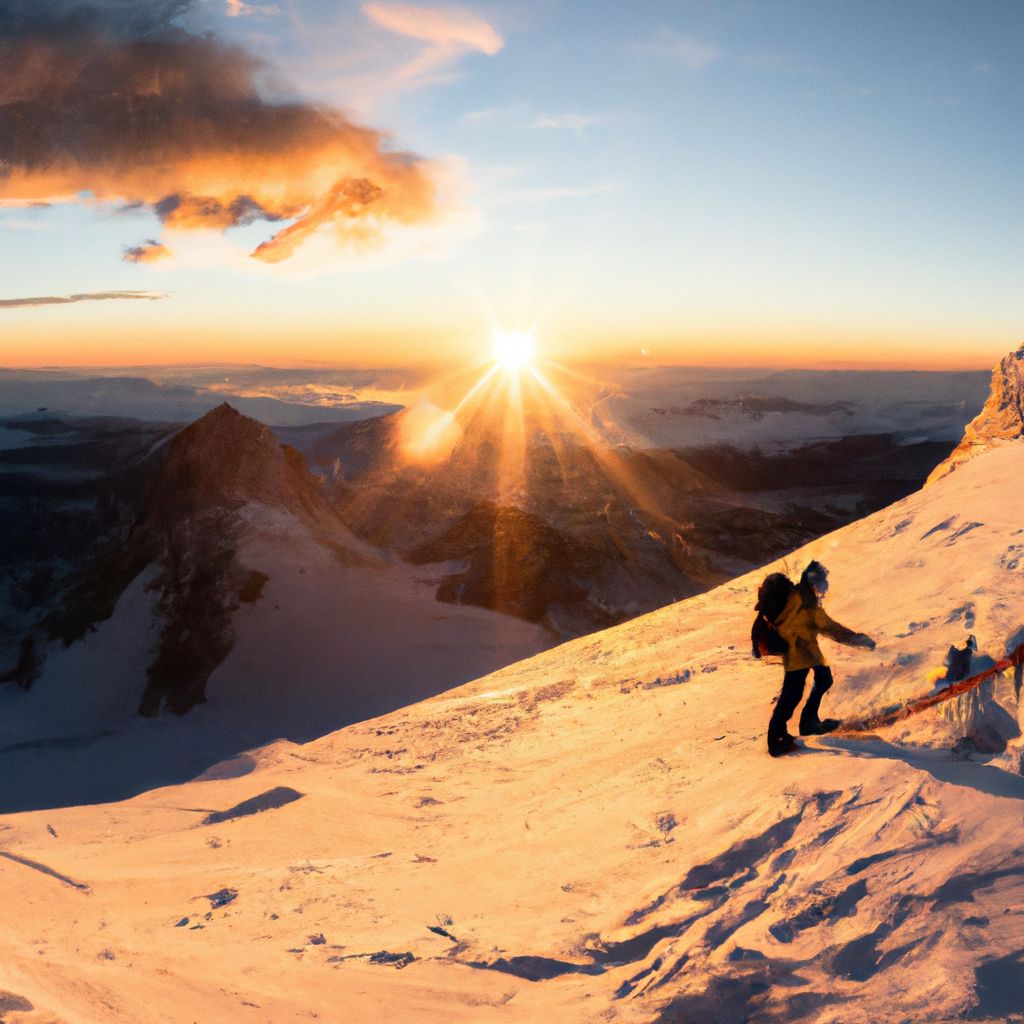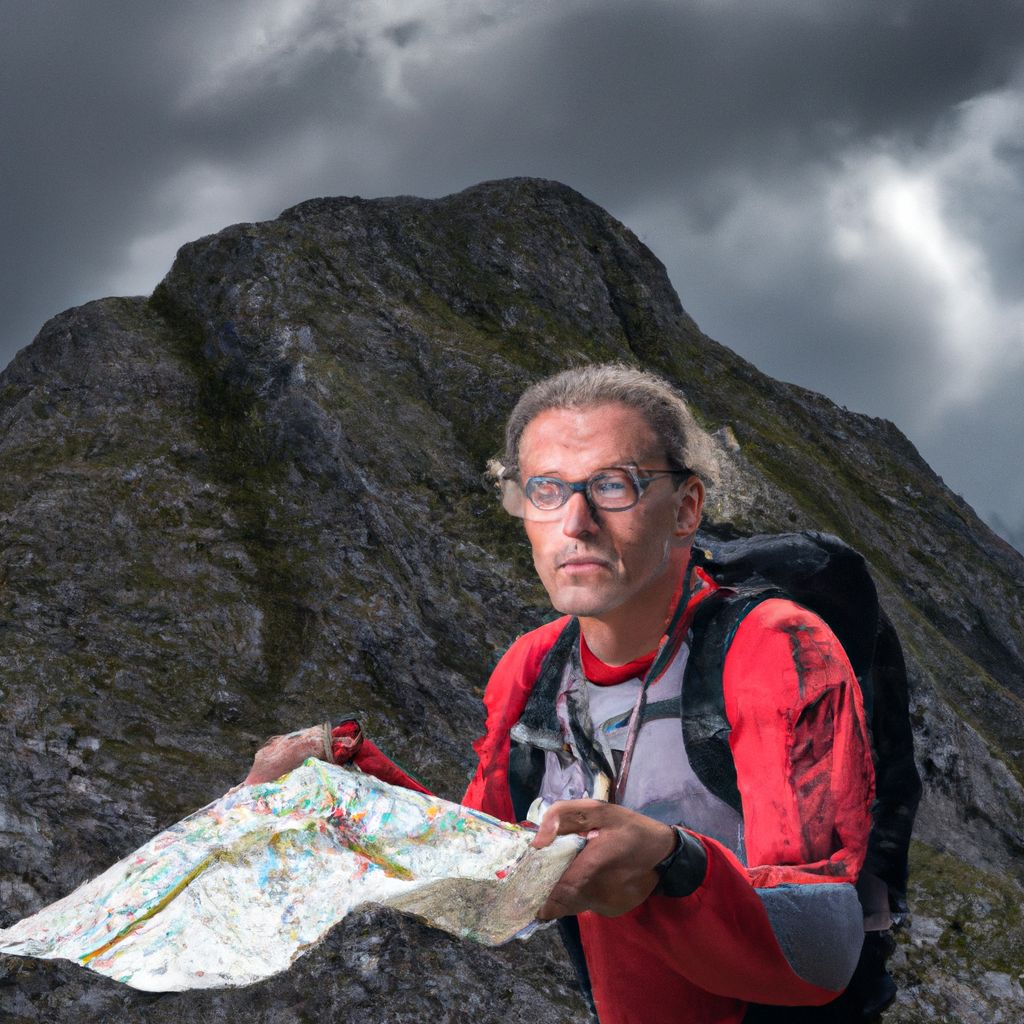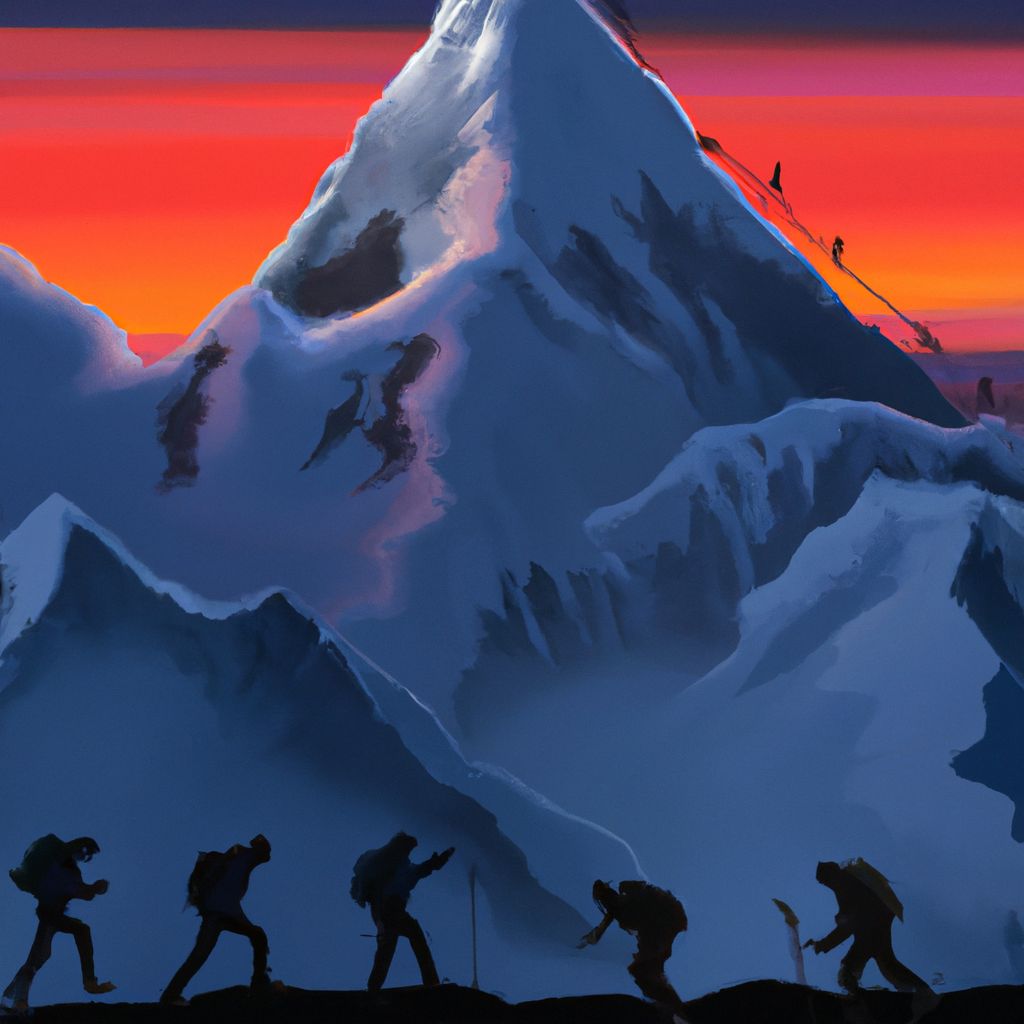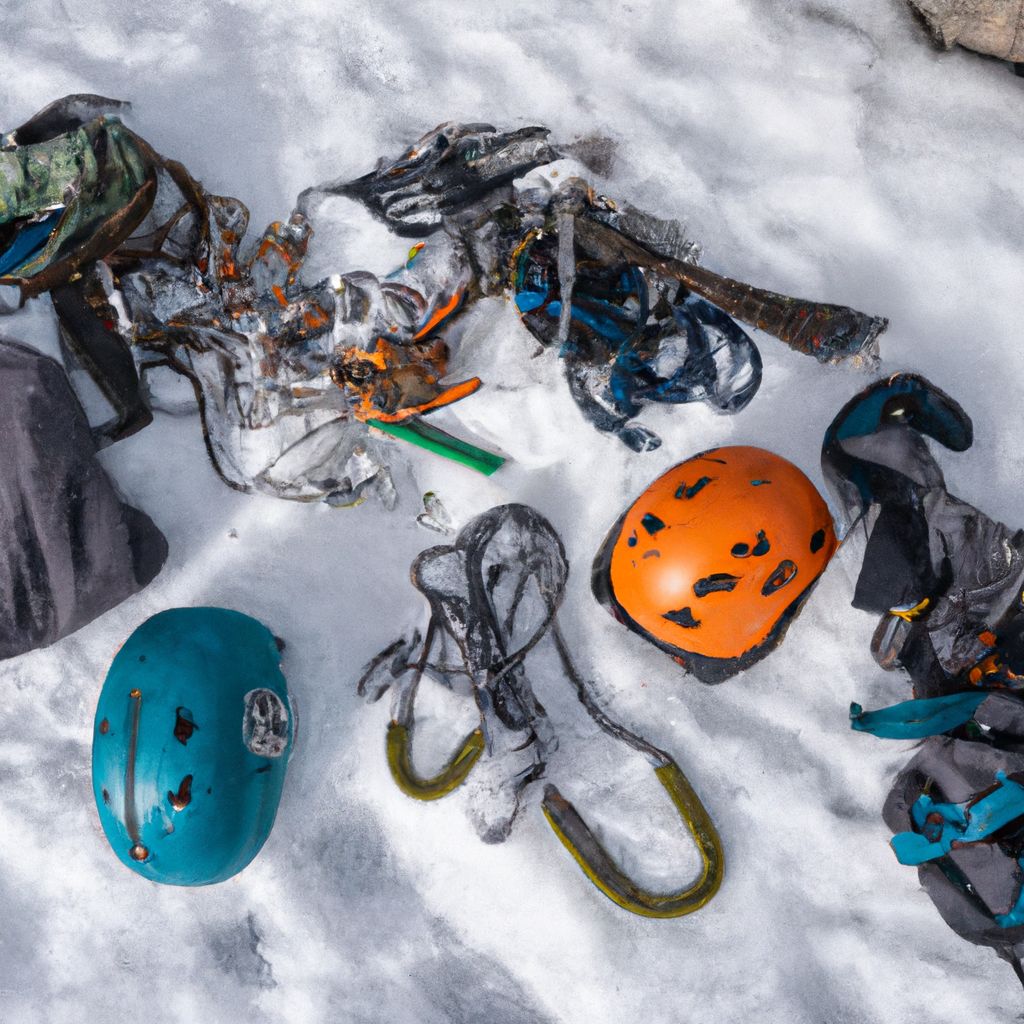- Introduction to Mountaineering
- Understanding Different Mountaineering Disciplines
- Essential Gear for Mountaineering
- Physical and Mental Preparation
- Safety and Risk Management
- Basic Mountaineering Skills
- Planning Your First Mountaineering Trip
- Conquering the Peaks: Inspirational Stories
Introduction to Mountaineering

Mountaineering, also known as mountain climbing, is a sport that encompasses the climbing of mountains. This activity combines elements of hiking, rock climbing, and often times, ice climbing. It requires high levels of physical fitness, mental toughness, and technical skills, making it a challenging yet rewarding pursuit.
Mountaineering dates back to the earliest days of human history, when our ancestors climbed mountains either for survival or for religious purposes. It wasn't until the 19th century, however, that mountaineering began to emerge as a recreational activity. The first recorded ascent of a major peak was the successful climb of Mont Blanc in 1786 by Michel-Gabriel Paccard and Jacques Balmat. This event is often considered the birth of mountaineering as we know it today.
So, what makes mountaineering appealing to many? For some, it's the physical challenge of pushing their bodies to the limit. For others, it's the mental test of overcoming fear and doubt. And for many, it's the sense of accomplishment that comes from reaching the summit. But beyond these, mountaineering is also a way to connect with nature, to experience the beauty and rawness of the wilderness in a way few other activities can offer.
Essential Qualities of a Good Mountaineer
- Physical Fitness: Mountaineering demands a lot from the body. It requires strength, stamina, balance, and endurance. A good mountaineer must be in top physical condition to withstand the rigours of climbing.
- Mental Toughness: The mental aspect of mountaineering is just as important as the physical. Climbers often face harsh weather conditions, high altitudes, and difficult terrains. They must remain focused, calm, and resilient in the face of these challenges.
- Technical Skills: Safe and successful mountaineering requires a wide range of skills. These include navigation, rope work, ice climbing, and avalanche safety, among others. A good mountaineer is always learning and improving their technical abilities.
Understanding Different Mountaineering Disciplines

While the term mountaineering encompasses a broad range of activities, it can be broadly classified into three main categories: traditional mountaineering, ski mountaineering, and alpine mountaineering.
- Traditional Mountaineering
- Also known as expedition-style mountaineering, this discipline involves climbing large mountains over several days or weeks. Traditional mountaineering often requires the use of fixed ropes, high-altitude porters, and established campsites. The goal is generally to reach the summit of a mountain, regardless of the route or time taken.
- Ski Mountaineering
- This discipline combines mountaineering with backcountry skiing. Ski mountaineers ascend mountains on foot or with the use of skis and skins, and then ski down. The sport requires not only climbing and skiing skills, but also knowledge of avalanche safety and winter survival techniques.
- Alpine Mountaineering
- Also known as alpinism, this discipline focuses on climbing mountains in a single push, without the use of fixed ropes or campsites. Alpine mountaineering is often considered the most challenging form of mountaineering, as it requires a high level of technical skill, physical fitness, and self-sufficiency.
Mountaineering is often confused with other outdoor activities like hiking and trekking, but there are key differences between them.
- Hiking
- Involves walking in natural environments, usually on pre-marked trails. It does not involve the technical skills required in mountaineering.
- Trekking
- Is a multi-day, long-distance hike in mountainous or wilderness regions. Like hiking, it doesn't usually require technical climbing skills, although the physical demands can be high due to the length and terrain of the trek.
In essence, while all these activities involve exploring the great outdoors, mountaineering is distinguished by its technical, physical, and mental demands, as well as its emphasis on reaching the summit of mountains.
Essential Gear for Mountaineering

Proper equipment is crucial in mountaineering, both for comfort and safety. Here is a list of essential gear for mountaineering:
- Clothing:
- Layers are key in mountaineering clothing. You should have a base layer to wick away sweat, an insulating middle layer, and a waterproof outer layer. Your clothing should be breathable, quick-drying, and durable. Don't forget hats, gloves, and thermal socks.
- Footwear:
- Mountaineering boots should be sturdy, waterproof, and insulated, with good ankle support. They should also have stiff soles for crampon attachment. Always try boots on with the same socks you'll be wearing on the climb to ensure a good fit.
- Backpack:
- Choose a backpack that is large enough to carry all your gear, but not so large that it becomes cumbersome. It should have a good harness system to distribute weight evenly, and multiple compartments for easy access to your gear.
- Climbing Tools:
- Ice axe, crampons, and ropes are some of the main climbing tools. The ice axe is used for balance, cutting steps, and self-arrest in case of a fall. Crampons provide traction on ice and snow. Ropes are used for safety, belaying, and rappelling.
- Safety Gear:
- Helmets protect against falling rocks and ice. Harnesses are used in conjunction with ropes for safety. Carabiners, pulleys, and ascenders are used for belaying and ascending ropes. Avalanche transceivers, shovels, and probes are essential for avalanche safety.
- Navigation Tools:
- Maps, compasses, and GPS devices are essential for navigation. It's important to know how to use these tools, as well as understanding the terrain and weather conditions.
When choosing mountaineering equipment, it's important to prioritize quality and functionality. Research different brands, read reviews, and don't hesitate to ask for advice from experienced mountaineers. Remember, your gear can be the difference between a successful summit and a dangerous situation.
Physical and Mental Preparation

Physical Fitness
Physical fitness is crucial in mountaineering. The activity requires strength, endurance, balance, and flexibility. Prior to any mountaineering expedition, a rigorous training routine should be followed to prepare the body for the physical demands of the climb.
A good mountaineering fitness plan should include:
- Cardiovascular Training: This could be running, cycling, swimming, or hiking. The aim is to build stamina and improve the body's oxygen efficiency, especially important in high altitude climbs.
- Strength Training: Focusing on full body workouts, paying special attention to legs and core which are heavily used during climbing. Weightlifting, resistance training, and exercises like squats, lunges, and planks are beneficial.
- Flexibility and Balance: Incorporating yoga or pilates can improve flexibility and balance, which can help prevent injuries.
- Altitude Training: If possible, train at high altitudes to help the body acclimate to lower oxygen levels. If this isn't feasible, simulated altitude training or hypoxic training can be considered.
Mental Preparation
Mountaineering is as much a mental challenge as it is a physical one. Mental toughness is essential for coping with the discomfort, fear, and stress that can come with mountaineering. Here are some strategies for developing mental toughness:
- Meditation and Mindfulness: These practices can help manage stress and maintain focus during difficult moments.
- Visualization: Imagining yourself successfully navigating challenging sections of the climb can boost confidence and reduce fear and anxiety.
- Goal Setting: Setting small, achievable goals throughout the climb can help maintain motivation and a positive mindset.
- Training in Challenging Conditions: Training in difficult weather or tough terrains can prepare you for the unpredictability of the mountains.
Both physical fitness and mental preparation are integral parts of mountaineering. They go hand in hand in ensuring a safe and enjoyable climbing experience.
Safety and Risk Management

Mountaineering, while exhilarating, is not without risks. Understanding these risks and knowing how to manage them is crucial for a safe climbing experience.
- Altitude Sickness:
- This is a common risk in high-altitude climbing. Symptoms include headache, nausea, and fatigue. It's crucial to acclimatize properly, ascend slowly, and stay hydrated. Prescription medications can also be used as a preventive measure.
- Extreme Weather:
- Mountaineers can face harsh weather conditions, including storms, high winds, and extreme cold. Understanding weather patterns and knowing when to turn back is key. Always check the weather forecast before embarking on a climb.
- Avalanches:
- Avalanches are a major risk in snowy mountainous areas. Taking an avalanche safety course, carrying avalanche safety gear, and avoiding steep slopes in certain conditions can help manage this risk.
- Falls:
- Ice, snow, and challenging terrains increase the risk of falls. Proper training, using the correct equipment like ropes and crampons, and being cautious can help prevent falls.
Beyond understanding and managing these risks, here are a few tips to ensure safety while mountaineering:
- Navigation Skills: Knowing how to use a map, compass, and GPS is crucial. These tools can help you stay on track and find your way if you get lost.
- Emergency Plan: Always have a solid emergency plan. This includes knowing the emergency procedures of the area you are climbing, having a way to communicate in case of an emergency, and carrying a first aid kit.
- Never Climb Alone: Always climb with a partner or as part of a group. This not only provides moral support but also ensures that there is help at hand in case of an emergency.
- Respect the Mountain: Follow Leave No Trace principles, respect wildlife, and do not take unnecessary risks. The mountain environment is both beautiful and fragile, and it's our responsibility to protect it.
Remember, safety should always be the top priority in mountaineering. No summit is worth risking your life for.
Basic Mountaineering Skills

Mountaineering is a complex activity that requires a wide range of skills. Here are some of the basic skills every mountaineer should have:
- Climbing Techniques:
- These include techniques for ascending and descending, using climbing tools like ice axes and crampons, and moving safely over different types of terrain. Climbing classes and guided climbs are good ways to learn these skills.
- Knot Tying:
- Knowing how to tie a variety of knots is essential in mountaineering. Knots are used for securing ropes, creating anchors, and belaying, among other things. Numerous online tutorials and books are available for learning knot tying.
- Route Finding:
- This involves choosing and following the safest and most efficient route up the mountain. It requires skills in map reading, compass use, and terrain analysis. Navigation courses can be a helpful resource for learning these skills.
- First Aid:
- Every mountaineer should have basic first aid skills, including how to treat wounds, fractures, hypothermia, and altitude sickness. Wilderness first aid courses are specifically designed for outdoor enthusiasts and cover these topics in depth.
In addition to these skills, every mountaineer should also be knowledgeable about avalanche safety and rescue techniques. Avalanche safety courses are available in many areas with active mountaineering communities.
Resources for learning these skills can be found through mountaineering clubs, outdoor education centers, and online platforms like the American Alpine Institute, National Outdoor Leadership School (NOLS), and Mountain Training.
Planning Your First Mountaineering Trip

Planning your first mountaineering trip is an exciting task, but it can also be a bit daunting. Here are some steps to guide you through the process:
- Choosing a Destination: Start with a mountain that is suitable for beginners. Research different mountains, considering factors like altitude, difficulty of the climb, and the best time of year to go. Local mountaineering clubs and online forums can be good sources of information.
- Planning a Route: Once you've chosen a mountain, the next step is to plan your route. Use topographic maps and guidebooks to get a sense of the terrain. Consider hiring a guide for your first climb, as they can provide valuable advice and help ensure your safety.
- Physical Preparation: Begin a training regimen several months before your trip. Your training should include cardiovascular exercises, strength training, and flexibility exercises. Altitude training, if possible, can also be beneficial.
- Packing: Make a list of all the gear you'll need, including clothing, climbing equipment, camping gear, food, and first aid supplies. Double-check your packing list to make sure you haven't forgotten anything. Remember, it's better to overpack than underpack for a mountaineering trip.
- Preparing for the Journey: Research travel logistics, such as how to get to the trailhead, where to stay before and after the climb, and any permits or fees you'll need to pay. Make sure to inform someone of your plans, including your route and expected return date.
When it comes to dealing with altitude sickness and other common challenges, here are some tips:
- Ascend slowly to give your body time to acclimate to the altitude. If you start feeling symptoms of altitude sickness, don't ascend any further until symptoms improve.
- Stay hydrated and eat high-carb meals to help your body adjust to the altitude.
- Be prepared for changes in weather. Pack layers so you can add or remove clothing as needed, and always carry rain gear.
- Listen to your body. If you're feeling tired or unwell, it's okay to turn back. Safety should always be your top priority.
Remember, a successful mountaineering trip is not just about reaching the summit, but about enjoying the journey and returning home safely.
Conquering the Peaks: Inspirational Stories

There's no shortage of inspirational stories in the world of mountaineering. Here are a few that continue to inspire generations of mountaineers:
- Sir Edmund Hillary and Tenzing Norgay:
- No list of inspirational mountaineering stories would be complete without mentioning the first successful ascent of Mount Everest. In 1953, New Zealander Edmund Hillary and Sherpa Tenzing Norgay became the first climbers confirmed to have reached the summit of the world's highest peak, forever etching their names in mountaineering history.
- Reinhold Messner:
- Reinhold Messner, often considered the greatest mountaineer of all time, was the first climber to reach the summit of all fourteen "eight-thousanders" (peaks over 8,000 meters above sea level) without supplemental oxygen. His solo ascent of Mount Everest in 1980 remains one of the most remarkable feats in mountaineering.
- Junko Tabei:
- Junko Tabei of Japan shattered gender stereotypes when she became the first woman to summit Mount Everest in 1975. Despite facing numerous challenges, including an avalanche during her Everest climb, Tabei never gave up. She went on to become the first woman to climb the highest peak on every continent.
- Jim Whittaker:
- In 1963, Jim Whittaker became the first American to summit Mount Everest. Despite losing 30 pounds and suffering frostbitten cheeks, Whittaker's determination carried him to the summit. His achievement paved the way for future American mountaineers.
These stories encapsulate the spirit of mountaineering - the determination, the resilience, and the sheer human will to conquer the peaks. They serve as a reminder of what can be achieved when we push our limits and dare to dream big.








